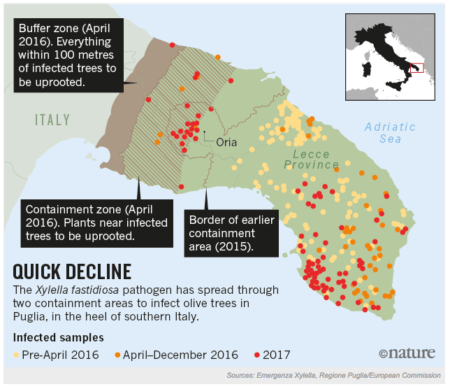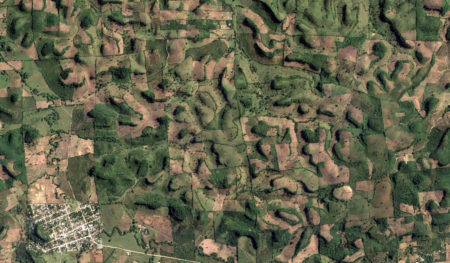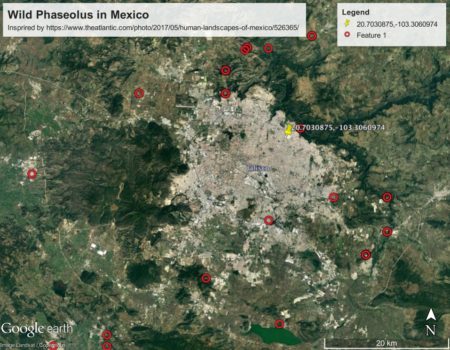In case you were wondering, the latest on the “olive plague” (Xylella fastidiosa) is that it’s spreading through the so-called containment areas. Oh joy.

It’s apparently all the fault of the “authorities,” according to a new audit of the control efforts, reported in Nature.
The commission’s audit, published on 31 May, includes a litany of failures by Italian authorities. It says that systematic monitoring of the infection began too late, and that there were ‘excessive delays’ in uprooting some infected trees. And the report charges that national and regional authorities have disbursed little more than half of the €10 million (US$11.2 million) budgeted for containment measures. Data obtained by Nature add further evidence of a slow response. In most of 2016, Italian laboratories processed almost no Xylella samples — indicating that monitoring had almost ceased (see ‘Lab drought’). Authorities did not respond to requests for comment.
But fear not…
There is some good news. Scientists in Puglia have identified two varieties of olive tree that are relatively resistant to the disease. Last month, the commission proposed that these could be planted in infected areas, to replace dead trees. But work to develop fully resistant trees could take a decade or more, says Martelli.
What a time to be alive.

